Rip currents, drownings prompt question: Are more lifeguards needed on Brevard beaches?
It is a beautiful, warm Friday afternoon and a few yards away from the water, children play as waves roll across the sandy coastline, then retreat back into the ocean just south of Indialantic’s boardwalk.
But no one is in the water.
Not now.
Instead, amid the beach umbrellas, coolers and chairs dotting the oceanfront on an otherwise picture-perfect day, many of the adults are staring quietly at the sight unfolding a few feet away.
There, a cluster of uniformed rescue workers circle around a man lying on the sand. Kneeling paramedics work frantically to revive him with chest compressions.
Thirty minutes later, a paramedic covers the body with a blanket.
“Just so sad,” a woman wearing sunglasses says as she and family members head back to the crowded parking lot, leaving the beach for the day.
This sobering moment, which unfolded on March 24, was the eighth apparent drowning to take place along south Brevard County’s beaches since November.
All of the deaths happened at unguarded beaches in southern Brevard. Many of the victims have been out-of-towners. They included a New York soccer coach who struggled to save his children from the rough surf, an 18-year-old south Florida high schooler visiting Melbourne Beach with friends and a 17-year-old girl caught in the powerful waves. All died after being overpowered by rip currents — those fast-moving undercurrents in the tide that can yank even the strongest of swimmers out to sea. Some died as family members looked on, Brevard County Ocean Rescue officials say.
The deaths continue to be a point of concern for city and county officials caught in a confluence of budget questions over creating more permanent lifeguard stations; weather and surf conditions; and a search for more staff as crowds of tourists and residents take advantage of good beach weather.
The latest: Eighth person since November drowns off Brevard beach
Plus: Dangerous surf prompts more worry as teen's body recovered from Brevard beach
From February: New York dad who died after caught in undertow at Melbourne Beach called hero by family
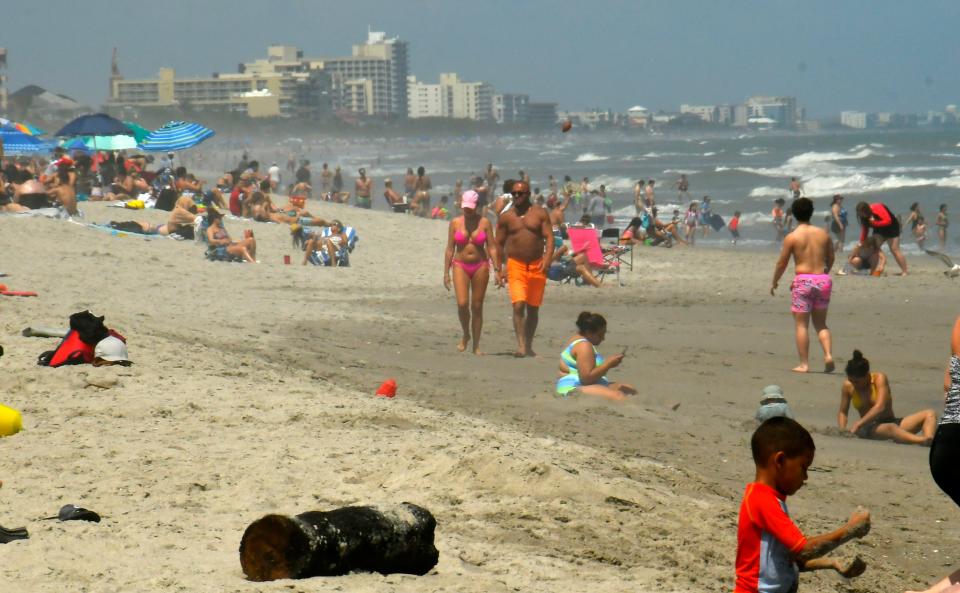
The immediate response has been for the county to staff lifeguards in Indialantic on Fridays — a time when several drownings took place — along with more lifeguard patrols. Those actions come as Brevard County Ocean Rescue prepares to hold a lifeguard recruiting event this month and as the county conducts a multifaceted feasibility study that could offer more possible solutions.
"This is just so tragic,” said Melbourne Beach Town Manager Elizabeth Mascaro, who joined Indialantic officials in seeking solutions as the Easter holiday and Memorial Day — both busy beach times — draw near.
“Both towns know how awful this has become. These rip currents are unprecedented. We’re trying to make people aware but sadly, some may not pay attention to the signs. But we’re pressing forward and trying to come up with solutions."
Spreading the word about rip currents has been the main, and most urgent, focus.
Along with enhanced warnings at beach access points, Brevard County public safety administrators are conducting a study to determine what more is needed to protect beachgoers, and reasons behind the uptick in deaths. Among the questions being addressed are whether more lifeguards are needed year-round for the south beaches — where the bulk of the drownings have taken place — and different fees paid by municipalities to the county for the service.
"It's a priority," Brevard County Commissioner John Tobia told FLORIDA TODAY about the study.
Tobia recently called Mike McDermott, the mayor of Indialantic, to talk about the latest drowning and the study.
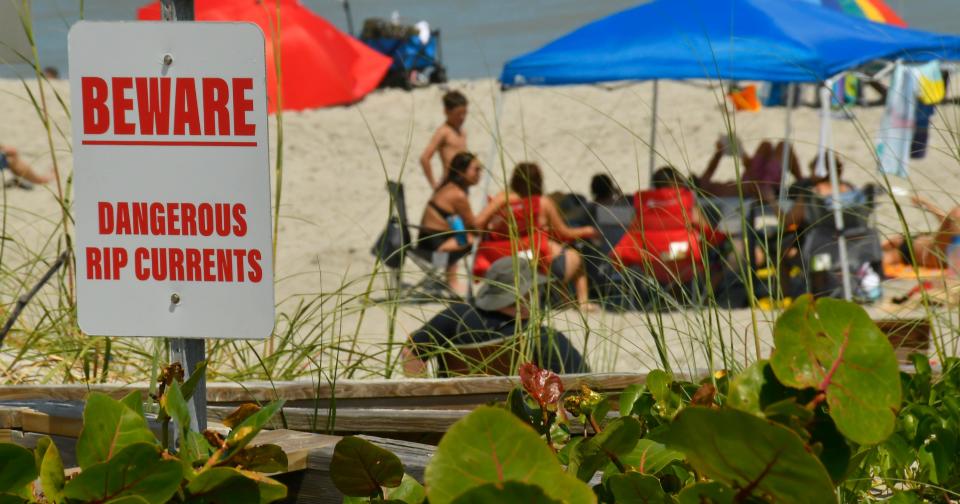
McDermott called the situation a "work in progress."
“From my understanding, (the county) is not making any decisions until the study is done,” McDermott said, adding that he has lived in Indialantic for 10 years and couldn’t recall seeing so many drownings — five of which were in his city limits — back to back.
“We'd like to see it sooner but there’s only so much we can do,” he said.
Big crowds, 60 lifeguards
The latest deadly toll is a reminder of the 10 drownings along Brevard’s 72-mile shoreline in 2007, a tragic year that later paved the way for five permanent lifeguard stations, according to a Brevard Ocean Rescue study that followed.
This year, Ocean Rescue crews say, a combination of warm weather, crowded beaches and unsettled sand beneath the waves, coupled with stronger than usual rip currents, are all playing a role in safety concerns.
Brevard Ocean Rescue, with an annual budget of $2.6 million, has 60 lifeguards, some of them part-time and many of them students earning $13.75 an hour and who can't work on weekdays.
More lifeguards were deployed over spring break — a time when thousands of students flood beach town boardwalks — with seven-day-a-week lifeguards arriving in time for the summer season.
Signs warning of rip currents — put up following the 1998 drowning death of James McGriff, a 19-year-old All-America football player from Palm Bay who had been recruited by the University of Florida — dot Brevard's beaches.
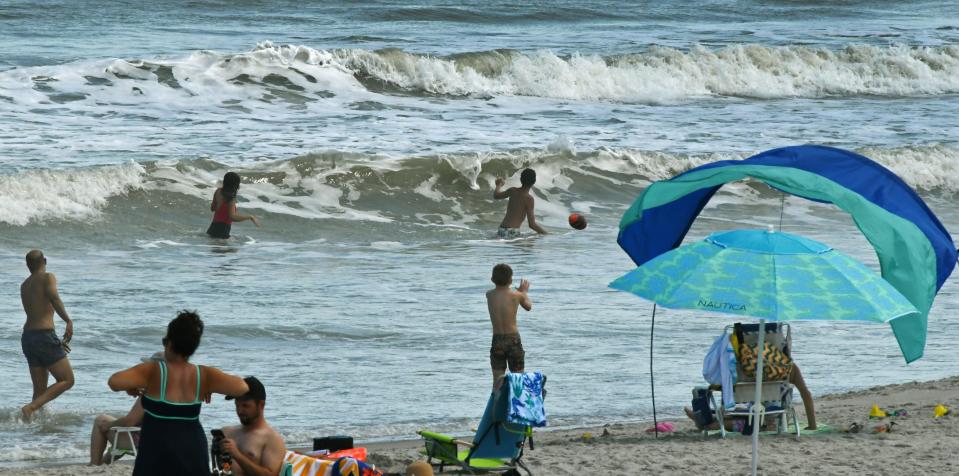
Every county beach access area has rip current safety messaging maintained by Brevard County, said Rachel Horst, county spokesperson. One sign, with red lettering on a white background, warns "Beware, Dangerous Rip Currents." The county is also working closely with the EOC, TDC, Florida Department of Transportation and all municipalities in getting information to the public through social media, alerts and mobile messaging boards, Horst said.
But it's a constant concern, and bad news travels.
Earlier this year, Cocoa Beach and Melbourne Beach were ranked as two of the most dangerous beaches in the U.S. in an article from TravelLens, a publication for world travelers.
The survey, which had Cocoa ranked just behind New Smyrna Beach and Melbourne Beach at No. 7, was based on the number of deaths the areas have had in the surf zone, shark attacks and hurricanes.
A quick trip to Melbourne Beach — where several of the drownings took place — finds a parking lot packed with out-of-towners, including many making day trips to the beach from Orlando or to catch one of the frequent space launches from Cape Canaveral.
On March 24, the date of the latest drowning, the parking lot at the Ocean Avenue beach was mostly full.
The county has five permanent lifeguard stations. Many are clustered within miles of one of the Space Coast’s most storied destinations, Cocoa Beach, which bills itself on highway billboards as the "World’s Most Famous Beach.” The tourist town has more than 2.5 million visitors a year.
“We do have lifeguard stations; the furthest south we have one is at Spessard Holland and that is operating now. We also have a weekend tower at Ocean and Fifth Avenue at Melbourne Beach,” said Horst, the county spokesperson.
Along with lifeguard tryouts this month, seasonal tower locations will open along the crowded beaches seven days a week after Memorial Day weekend in May.
"We also have our mobile units that will respond to out of area calls within the 39.5 miles of accessible beachfront," Horst said.
"We recognize this is a significant concern for our community and Brevard County government is working closely with our local partners to develop a plan to meet the current needs of our residents and visitors."
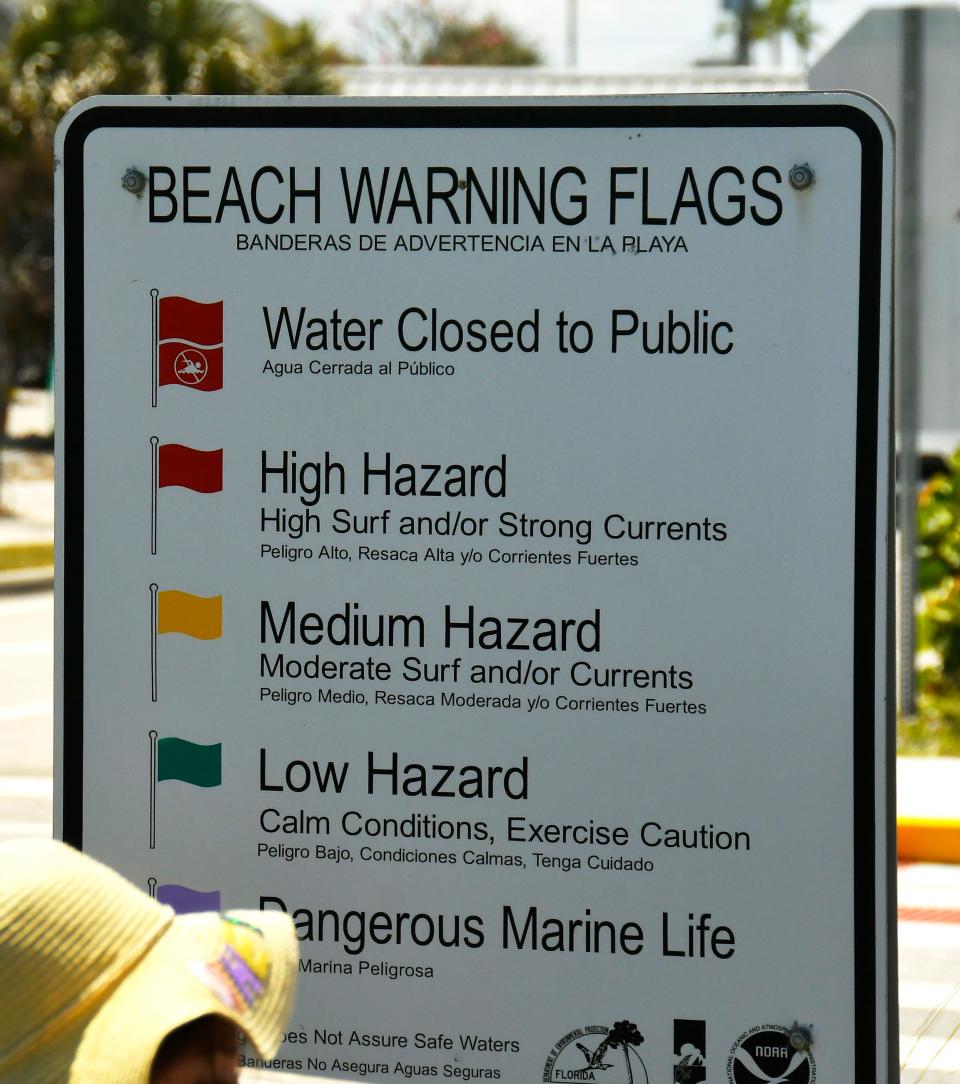
At the beach, however, few stop by to read the large signs warning about rip currents at beach accesses. Melbourne Beach and Indialantic officials have placed signs strategically along boardwalks and roadways, too, warning about the dangerous waves. Hoteliers have been asked to forward information about dangerous waves, Horst said.
It was shortly after Hurricanes Ian and Nicole that Ocean Rescue officials noticed a change in the sea floor along with a consistent pattern of rip currents. In December alone there were some 200 rescues as crowds took advantage of the tropical Florida weather to hit the beach, Horst pointed out. That high number prompted the county to grant Ocean-Rescue an extension of additional seasonal lifeguards to help cover the beaches.
“The most important takeaway is for beachgoers to visit a beach with lifeguards,” Horst said.
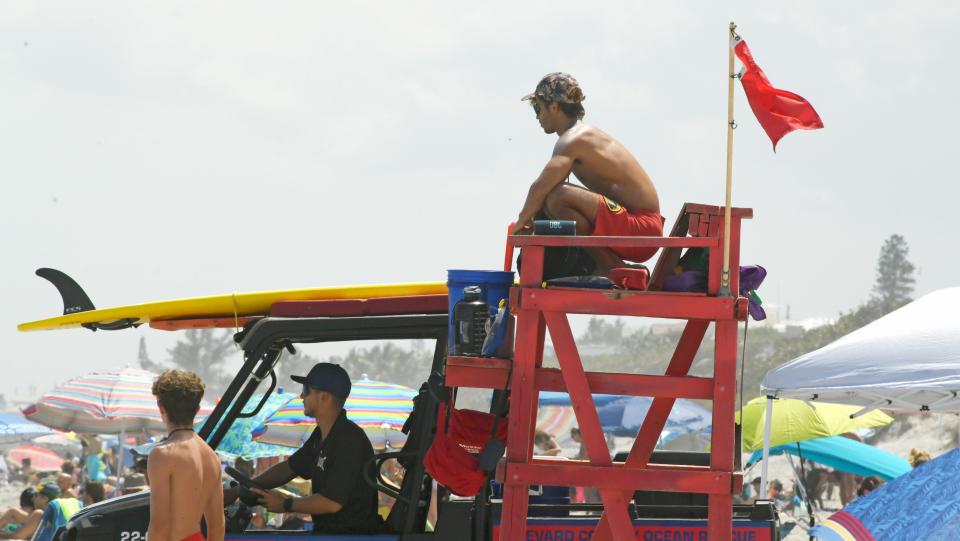
Sand changes along Brevard beaches
The concerns hit home for Travis Hunsucker, a former lifeguard who turned his passion for water into an academic pursuit as assistant professor of ocean engineering.
Each morning, just after sunrise, the Florida Institute of Technology professor walks to Melbourne Beach to hit the waves.
As a surfer, he loves the waves. As an academician and a parent, he definitely believes more research is warranted.
"We have more people coming to our beaches. It's very sad what's happening and preventable," said Hunsucker, one of more than 3,100 Melbourne Beach residents.
"We know, for example, that these major storms occurred and we know that moved a lot of sand around. Add to that that the beaches are more crowded and we have more rip currents. We do surf checks and you can see that the sand is still trying to find its home."
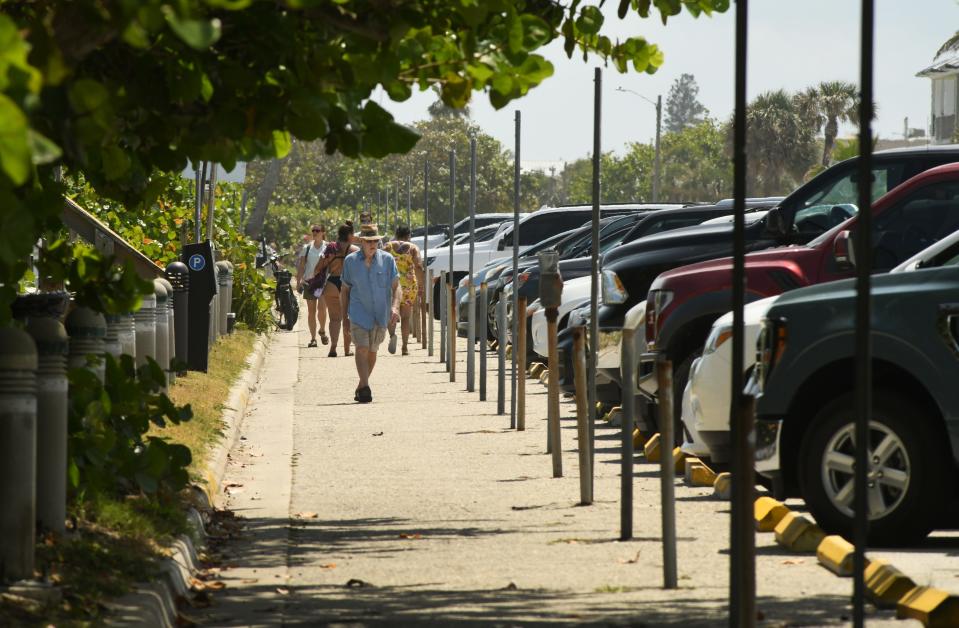
Outside of the science of rip currents, Hunsucker says, safety and prevention are a must. Some beachgoers know little about what a rip current can do or how powerful they are, he pointed out.
More may be needed, Hunsucker and others point out.
"We drive up and down Interstate 95 and see these billboards for people to visit Melbourne and its surrounding beaches," he said.
"But my general sense is that people may not be knowledgeable enough to understand the rip currents.
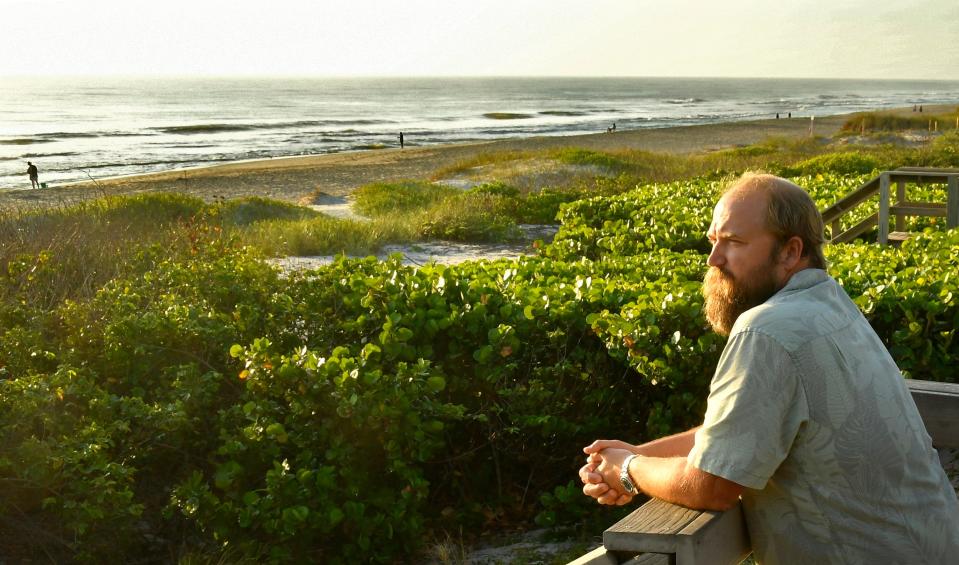
"But a lot of lifeguarding is about prevention and they are doing great. More of them would be good. They know where the rip currents are. That would go a long way."
J.D. Gallop is a criminal justice/breaking news reporter at FLORIDA TODAY. Contact Gallop at 321-917-4641 or jgallop@floridatoday.com. Twitter: @JDGallop.
This article originally appeared on Florida Today: Brevard drownings, rip currents 'priority' as summer beach season nears

